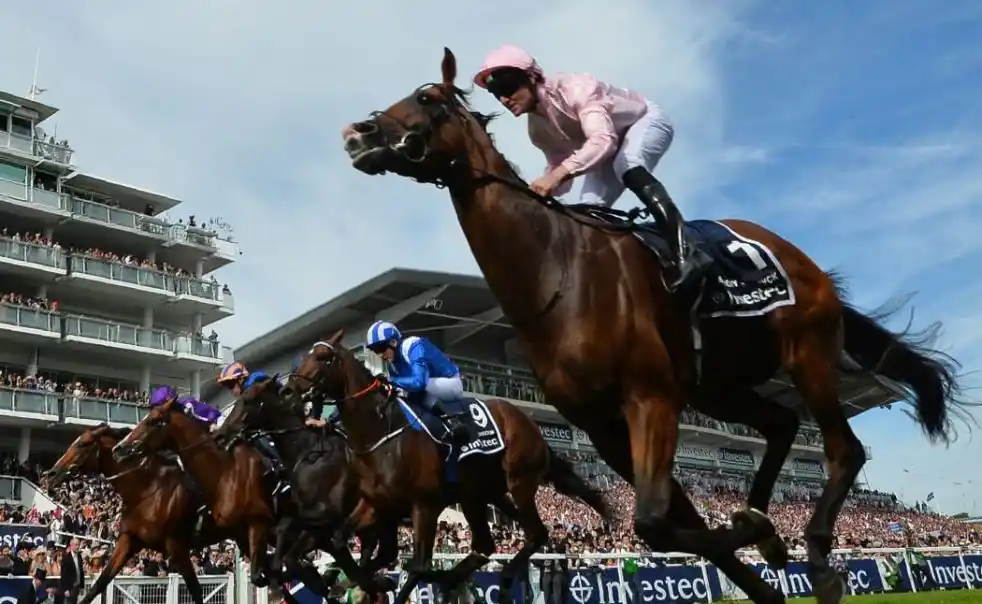Anthony Van Dyck in Melbourne Cup’s Vanishing Moments

Elle
Nov 7th 2025
Likes
Share:
On 3rd November, 2020, Flemington Racecourse with Anthony Van Dyck was very quiet. The loud cheers of about a hundred thousand racegoers that could normally be heard were instead replaced by the sound of machines used for recording and the dull noise of horses’ feet hitting the grass. Due to COVID-19 restrictions, the grandstands were devoid of people, hence the country’s most popular race had to take place in front of God only knows how many people.
One of the leading contenders was Anthony Van Dyck, an English Derby winner whose bloodline was of the highest quality. It was Bowman who calling on Anthony Van Dyck for the last time as they went into the home stretch and Bowman was wearing his pale pink silks that were shining under the spring sun. Suddenly, the scene was different.
The horse stumbled. Bowman helped him keep his balance, but it was obvious that something was not right. Anthony Van Dyck slowed down, lifted his front slightly, and stopped very quickly, sweating all over his sides. Bowman went off the horse and took off the saddle, Anthony Van Dyck’s face showing bad news. The horse was quickly put into the ambulance. A broken fetlock was a decision of putting down the animal.
For those few allowed trackside that day, the moment was unforgettable. Yet for anyone watching the official replay later, it never happened.
When the footage aired, a 12-second cut replaced the incident. Just before Anthony Van Dyck faltered, the camera switched to a tight shot of the eventual winner, Twilight Payment, racing for the finish. When the broadcast returned to the wider angle, the Derby champion had vanished from sight.
Anthony Van Dyck became the sixth horse in seven years to die as a result of the Melbourne Cup, but the first to be removed entirely from its visual record.
Australian horse racing once sat at the centre of sport. That event alone could be described as Melbourne Cup Day for around several decades. Melbourne Cup Day was less of a race and more of a national event that suspended the usual activities of workplaces, schools, and even Parliament. Its supremacy, however, gradually declined. Currently, thoroughbred racing is only able to attract limited public attention during the biggest spring and autumn carnivals and then fades away from the view when football, rugby, and cricket are back.
Even though its visibility has declined, the racing industry is still a major money-maker. It produced close to A$9.5 billion in 2022–23 and had around 75,000 employees, the number which would be twice as high if volunteers and part-time staff were considered. The same season saw more than A$26.3 billion wagered on thoroughbred events, a slight dip from the previous year’s record A$29.1 billion.
However, it was the first time in decades that the industry did not release betting data for the next season. The lack of this data has been a source of speculation by the detractors regarding openness and responsibility.
Over the last few years, criticism towards racing has become more and more visible. Various animal welfare organizations have become more vocal and aggressive by spreading their messages through social media campaigns and videos showing the death of horses on the racetrack as well as in their stables. Their communication has connected with the new generations, as a consequence, the ruling body of the racing industry has had to change their way of presenting the sport.
One of the clearest outcomes of this shift has been the quiet editing of official race replays. When a horse falls or sustains an injury, the footage is often removed or replaced with alternate angles showing other competitors. It is a practice not formally announced, but consistently noticed.
There is no official policy outlining when or how such edits should occur. Decisions are typically made by race clubs or broadcasters, sometimes in consultation with stewards. In certain regions, you can spot the falls for a very short time before the camera moves away, while in other places, the events are not shown at all. Different methods are used, but the goal is one and the same, to stop such kind of scenes from being shared and thus having the sport frowned upon by the public.
In the case of leading figures in the field, the choice to remove is frequently considered as a point of empathy, firstly towards the people watching, and secondly towards those engaged. However, detractors maintain that taking out such instances makes the game more clean-cut and hides the danger that horses and riders are exposed to.
Anthony Van Dyck’s last race draws out the discord between memory and image. For the people who were there, it was the whole unvarnished truth of the sport: both the joy and the sorrow were there together. For the people watching on television, it was just a routine race with a bright clean and undisputed win in COVID-19 restrictions.
That contrast speaks to a deeper question facing Australian horse racing today. As the sport seeks to preserve its relevance and safeguard its image, how much of its reality can it afford to hide?
While the Melbourne Cup continues to be a major element of the Australia national identity, its narrative is very much influenced by the aspects that are not visible. The vanishing moments of Anthony Van Dyck’s race, a sport that has been developed to show the most dramatic moments, is a subtle way of telling us that not every past event is there to be revisited.
